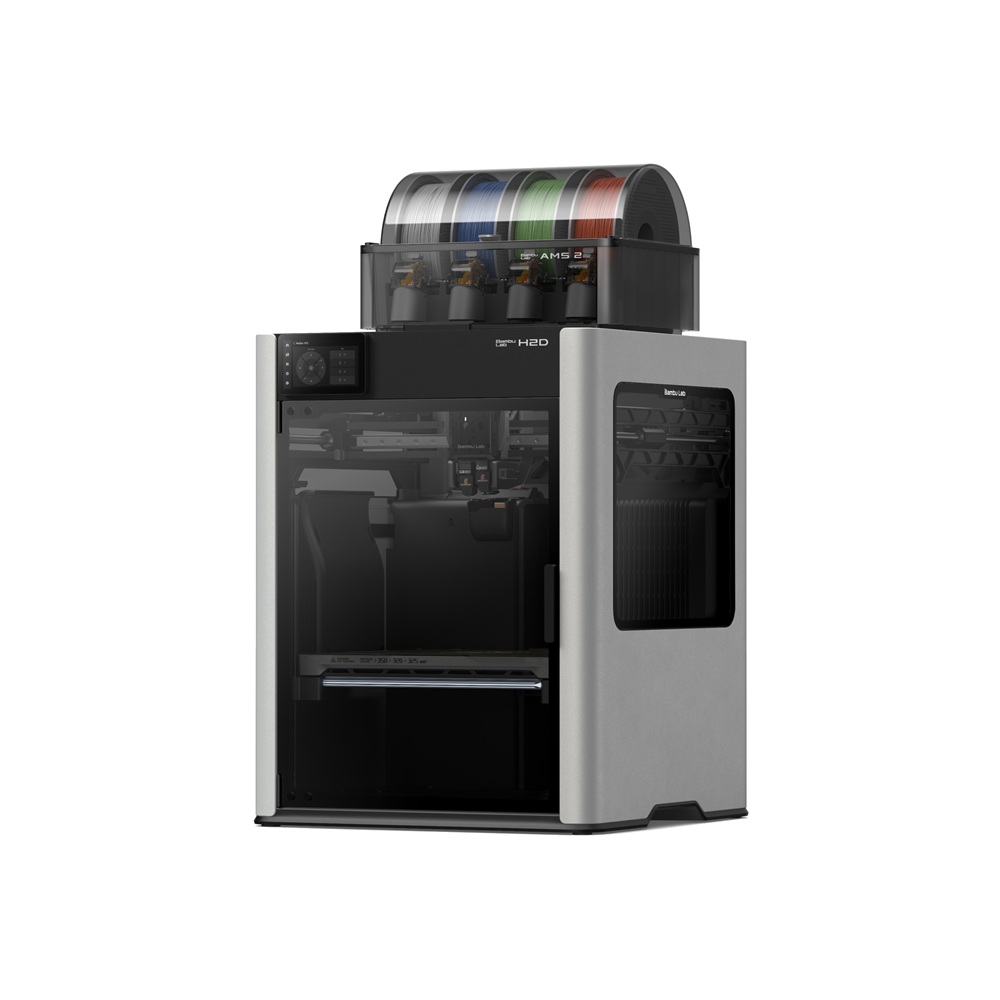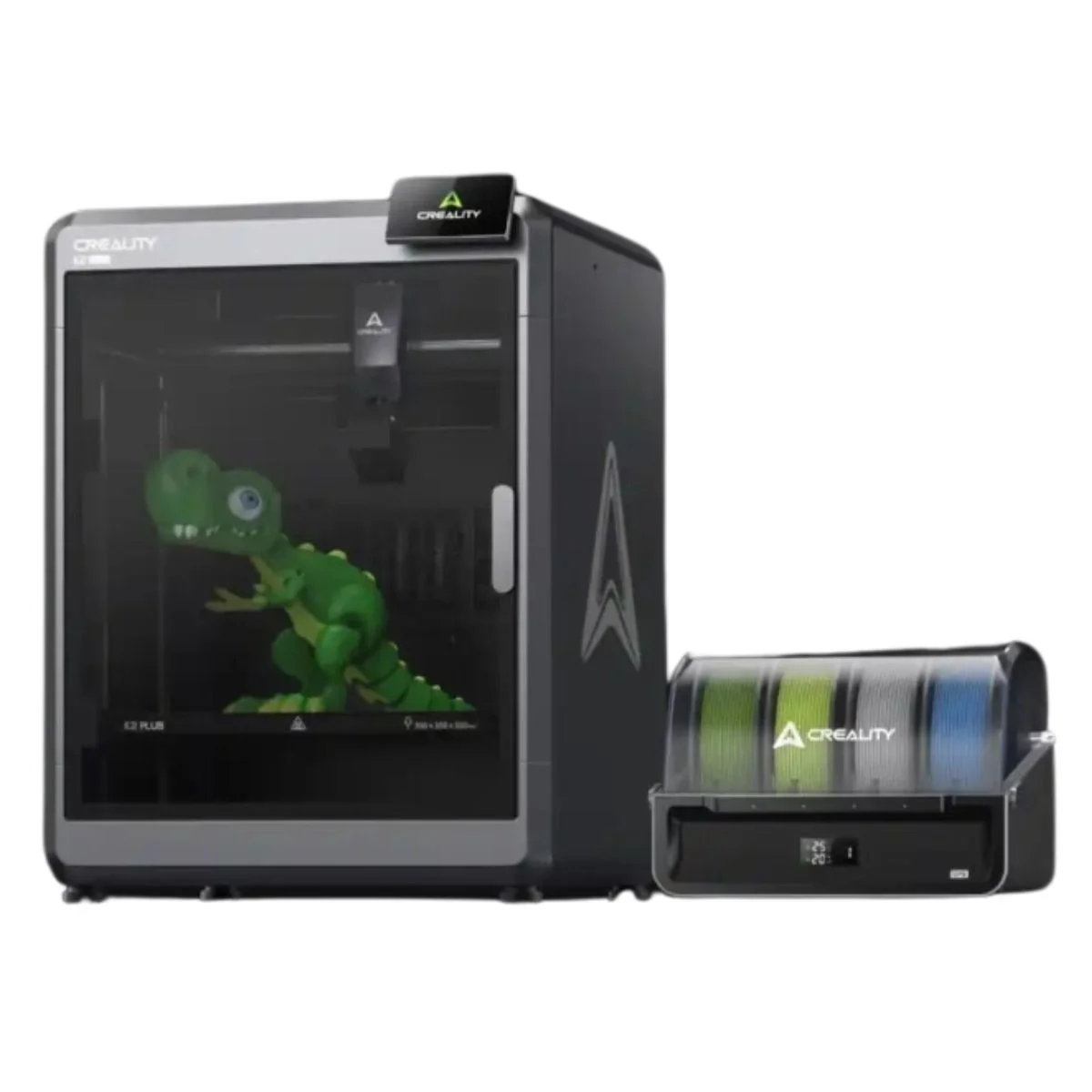Compare H2D vs K2 Plus
Comparison between the best 3D printers
Choose the best 3D printer at the best price. The cheapest 3D printers are here.
Buy a 3D printer here with 3D Fila.
 |
 |
|
| Model | H2D |
K2 Plus[BUY K2 Plus] |
| Printing Material | Filament | Filament |
| Buy Filament for Bambu Lab H2D | Buy Filament forCreality K2 Plus | |
| Estimated price | $1899,00 | $1500,00 |
| Manufacturer | Bambu Lab | Creality |
| Release Year | 2025 | 2024 |
| Print Volume [mm] | 350x320x325 | 350x350x350 |
| Printer Size [mm] | 492x514x626 | 495x515x640 |
| Weight [kg] | 42,3 | 33,5 |
| Power Loss Recovery | YES | YES |
| Enclosed printer | YES | YES |
| Bed Leveling | Automatic | Automatic |
| Filament End Sensor | YES | YES |
| Bed type | Heated | Heated |
| Power supply system | Direct Drive | Direct Drive |
| Standard nozzle | 0,4 | 0,4 |
| Maximum Nozzle Temperature [°C] | 350 | 350 |
| Maximum Bed Temperature [°C] | 120 | 120 |
| Maximum printing speed [mm/s] | 600 | 600 |
| Filament holder | YES | YES |
| Camera for supervision | YES | YES |
| Recommended filaments | PLA, PETG, ABS, ASA, TPU, PVA, Nylon (PA) | PLA, PETG, PET, TPU, PA, ASA, PC, PLA CE, PA-CF, PET-CF |
| Recommended slicers | Bambu Studio | Creality Print 5, Bambu Studio, Super Slicer, Cura, Prusa Slicer, Orca Slicer |
| Maximum Resolution [mm] | 0,01 | 0,1 |
| Processor | ||
| Display | Touchscreen 5'' | Touchscreen 4,3'' |
| Power Supply | 1200 W | |
| Connectivity | Wifi, Bambu bus, Cartão SD | USB / WIfi |
| Operating systems | Windows, Mac, Linux | Windows, Linux, Macbook |
| Date of registration in the system | 2025-03-31 | 2024-06-26 |
| Release date | 2025 | 2024 |
| Extra features | Bambu Labs H2D combines high-speed 3D printing with a chamber heated up to 65 °C, dual extrusion with automatic nozzle switching, an AMS for filament drying and exchange, and AI sensors that detect failures. It offers optional laser and digital cutting capabilities, features intelligent calibration through computer vision, vibration control, enhanced fire safety, and real-time camera monitoring. | The Creality K2 Plus 3D Printer stands out for its multicolor printing, large build volume (350x350x350 mm) and Apus Direct Drive extruder with tri-metal protection nozzle. It features automatic anti-tilt leveling, FOC closed-loop motors and active chamber heating. In addition, it has an intelligent CFS filament management system, cameras for calibration and monitoring, a 4.3-inch touchscreen and advanced sensors to optimize the printing process. |
| Support for multiple colors and materials (AMS and CFS) | YES | YES |
Notes * |
||
| Cost-benefit | 7 / 10 | 7 / 10 |
| Hardware | 8 / 10 | 7.2 / 10 |
| Tela | . | . |
| Print volume | 4 / 10 | 4 / 10 |
| Performance | 5 / 10 | 5 / 10 |
| [BUY K2 Plus] |
Conclusion |
| In conclusion, both the Bambu Lab H2D and the Creality K2 Plus present compelling options for 3D printing enthusiasts, yet they cater to slightly different needs and preferences. The Bambu Lab H2D, with its innovative features such as dual extrusion, automatic nozzle switching, and advanced intelligent calibration through computer vision, positions itself as a high-performance printer. Additionally, it boasts a slightly larger print volume and supports a diverse range of materials. Its optional laser cutting capabilities and real-time camera monitoring set it apart, making it well-suited for users who prioritize versatility and cutting-edge technology. However, this advanced functionality comes with a higher price point. On the other hand, the Creality K2 Plus offers a robust build and consistent performance at a lower price point. Its larger build volume and effective filament management system are significant advantages for users focused on multicolor and material versatility. Although it may lack some of the more advanced features found in the H2D, such as AI-driven sensors and optional laser capabilities, it still provides a comprehensive solution for those looking for reliable and effective 3D printing. Ultimately, the choice between the two printers depends on your specific needs, budget, and how much you value advanced technology versus practical performance. Both models deliver strong capabilities, making either a solid investment for 3D printing endeavors. |

